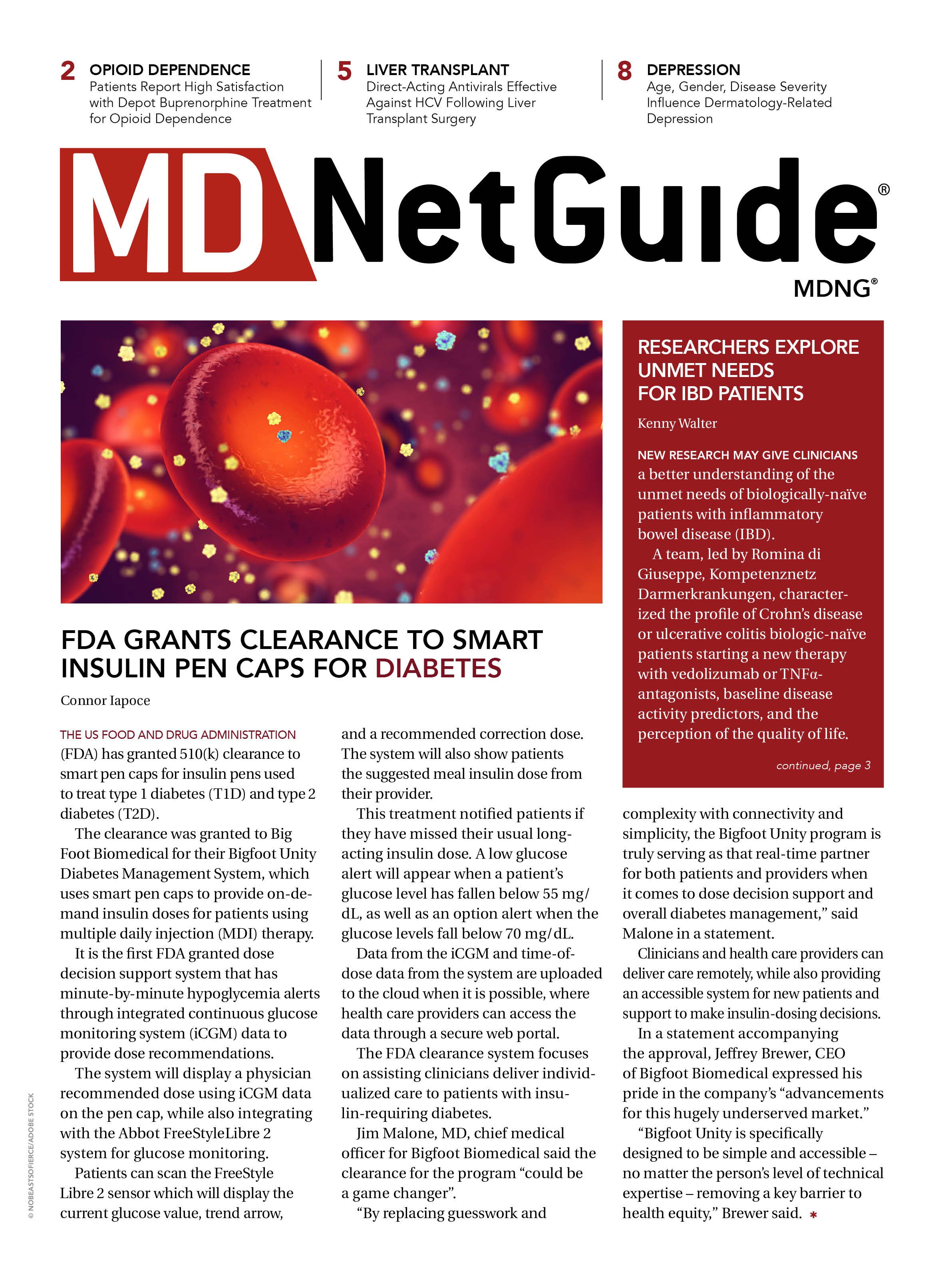Publication
Article
MD Net Guide Newsletter
Direct-Acting Antivirals Effective Against HCV Following Liver Transplant Surgery
Author(s):
The majority of adverse effects reported were considered mild.
Eric Kauffman-Ortega, MD

A regimen of direct-acting antiviral (DAA) treatments is safe and efficacious against hepatitis C virus (HCV) infections following liver transplantation.
A team, led by Eric Kauffman-Ortega, MD, Hepatology and Liver Transplantation Unit, Department of Gastroenterology, Instituto Nacional de Ciencias Médicas y Nutrición “Salvador Zubirán,” identified the efficacy and safety of DAA treatment following liver transplantation hepatitis C virus recurrence in a cohort based in Mexico.
HCV infections represent 1 of the most frequent causes of liver transplantations globally. Patients with HCV viremia at the time of transplantation universally develop recurrent HCV in the allograph, which causes accelerated fibrosis and graft loss.
However, treatment with direct-acting antivirals are highly effective and safe in this patient population.
The Study
In the retrospective cohort, the researchers examined all liver transplant patients between 2000-2019 with HCV recurrence following liver transplantation who received DAA.
The team collected clinical and biochemical characteristics from clinical records. The researchers also excluded patients who received treatment prior to a liver transplantation and patients who received interferon-based therapies after liver transplantation achieving sustained viral response at 12 weeks and eliminated patients who did not complete DAA therapy.
The investigators sought primary outcomes of SVR-12.
The final analysis included 56 patients receiving DAA after the transplantation, with 98% SVR-12.
The most frequent genotypes were 1b (54%) and 1a (34%) and the most common antiviral scheme used was sofosbuvir/ledipasvir for 12 weeks in 59% of the patients.
Safety
The safety profile was positive, with no severe adverse effects observed.
Ribavirin was used in 82% of the patients. While 23.9% of this patient subgroup suffered from adverse effects, the majority were deemed mild.
In addition, the median follow-up after the transplant surgery was 55 months (IQR, 43-51), with a global and graft survival at 1 and 3 years of 100%.
“In a Mexican cohort, DAA therapy in LT patients with recurrence of HCV infection showed high efficacy and an acceptable safety profile,” the authors wrote.
Pediatric Patients with HCV
Recent data show a pediatric formulation of the direct-acting antiviral therapy glecaprevir/pibrentasvir (GLE/PIB) is highly effective and well-tolerated in pediatric patients with HCV infections.
The findings mark a milestone in the treatment of children with HCV infection, since the data suggest that the dramatic results DAAs have brought about in adults can also be realized in children as young as 3.
About 13.2 million of the world’s estimated 71 million people with HCV infection are children between the ages of 1 and 15.
The study enrolled 80 patients with chronic HCV infection, genotypes 1-6, with or without compensated cirrhosis. The children were split into three age-based cohorts and given weight-based doses for either 8, 12 or 16 weeks. The primary endpoints were sustained virologic response at 12 weeks (SVR12) and steady-state exposure.
Of the 80 patients in the study, 77 achieved SVR12. One patient on the initial dose ratio had relapsed within 4 weeks of the end of treatment and 2 non-responders discontinued the study.
In the end, the investigators found doses of 250 mg GLE and 100 mg PIB were efficacious for children weighing 30 up to 45 kg. A dose of 200 mg GLE plus 80 mg PIB worked for children from 20 up to 30 kg, and the smallest patients (those 12-20 kg) achieved results at a dose of 150 mg GLE plus 60 mg PIB.
No serious drug-related adverse events were reported and pharmacokinetic exposures were comparable to those of adults.
The study, “Direct-Acting Antivirals in the Treatment of Hepatitis C Virus Recurrence after Liver Transplantation: Real-life Experience in a Mexican Cohort,” was published online in the Archives of Medical Research.

2 Commerce Drive
Cranbury, NJ 08512
All rights reserved.





